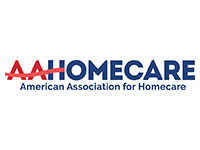AAHomecare Survey Reveals Supply Chain Disruptions, Price Increases For HME Providers During COVID-19 Crisis
The survey asked more than 500 providers about the issues they have faced in obtaining PPE, oxygen equipment and other products since the onset of the pandemic.
- By Haley Samsel
- May 14, 2020
 A new survey of more than 500 HME suppliers confirms what most providers already know – the COVID-19 pandemic has completely shifted the landscape for HME companies due to consistent supply chain disruptions and increased prices for almost all product categories.
A new survey of more than 500 HME suppliers confirms what most providers already know – the COVID-19 pandemic has completely shifted the landscape for HME companies due to consistent supply chain disruptions and increased prices for almost all product categories.
The survey, completed in late April, was commissioned by the American Association for Homecare and summarized by healthcare research firm Dobson DeVanzo & Associates.
Providers reported consistent problems with obtaining items necessary to treat the coronavirus. Nearly all – 97 percent – reported issues and delays to purchasing personal protective equipment (PPE). Eighty-one percent of respondents cited significant delays when obtaining ventilators and oxygen equipment, while a majority had issues obtaining hospital beds, CPAP machines and nebulizers.
HME professionals also said they faced delays in obtaining products not associated with the treatment of COVID-19, with 49 percent of respondents stating they had problems with purchasing “other medical supplies.” The AAHomecare report called these products “collateral damage” of the pandemic, with supply chains unable to withstand the demand for all kinds of HME supplies.
Unsurprisingly, delays were greater for product categories needed to treat COVID-19 patients. Of the providers surveyed, 67 percent cited delays of 31 to 60 days and 74 percent reported delays of over 61 days. Nearly three-quarters of providers said they had purchased products with “no known timeframe” for arrival.
In addition, the survey found that HME providers are grappling with price increases on necessary products, particularly PPE and oxygen equipment, as well as the implementation of new safety practices. Those practices include cleaning and sanitizing facilities, providing more PPE for staff and cleaning equipment and supplies.
“These survey findings drive home the point that the HME sector is subject to a new operating environment and cost structure as a result of this pandemic, and some of the safety requirements and new business practices we are seeing are likely to be with us even after the crisis fades,” Tom Ryan, AAHomecare president and CEO, said in a statement.
Citing the survey results, Ryan and AAHomecare are pressuring policymakers to put the next round of the competitive bidding program on hold and develop a reimbursement schedule for 2021 that is not based on a competition completed last fall.
“This crisis underscores the clear need for a stronger investment in home-based care that will strengthen and support our entire healthcare system,” Ryan said.
The full survey findings can be found here.
About the Author
Haley Samsel is the Associate Content Editor of HME Business and Mobility Management.